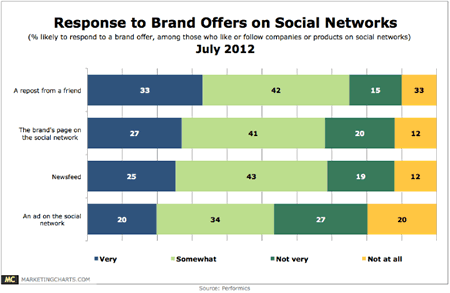 The opinion of others is an important driver in the buying decision of people. It has always been so. Word-of-mouth is still predominantly an offline matter although it’s really foolish to separate the online and offline dimension of peer advice in a channel-agnostic reality. While there are differences between the ways we buy consumer products and business solutions there are many similarities as well: we inform ourselves by taking into account the opinions of our circles of trust.
The opinion of others is an important driver in the buying decision of people. It has always been so. Word-of-mouth is still predominantly an offline matter although it’s really foolish to separate the online and offline dimension of peer advice in a channel-agnostic reality. While there are differences between the ways we buy consumer products and business solutions there are many similarities as well: we inform ourselves by taking into account the opinions of our circles of trust.
As the B2B buying process is often a group decision and in specific markets, we rely more on analyst advice, it’s important to make a distinction in defining these circles of trust and even look beyond the differences between B2B and B2C. It’s really a matter of knowing how YOUR customers take decisions.
The circles of trust and influence indeed differ. What we often call social proof also has impacts that are more emotional (social pressure, how we perceive others etc.) in steering our buying decisions that are determined by several elements.
Today, people increasingly buy and we decreasingly sell. We sell differently. We facilitate more, depending on the context. And consumers are indeed increasingly connected. That’s why it’s more important to focus on the reasons they use social media, form communities, connect and seek advice. It’s also why we need to understand the mechanisms in information gathering, sharing, preparing the purchase and post-buy activity, rather than focusing on how we can better sell. Furthermore, the social dimension whereby control shifts is not just about the buying journey, it’s about the overall customer life cycle and broader ecosystems that are connected in many degrees.
Social proof and trust
Social proof is not a matter of social media and social media marketing alone. It’s a human phenomenon that doesn’t know channels. However, as marketers we can earn it and channel it. Using recommendations and social proof in general is increasingly being used beyond social and in email marketing, on websites, on landing pages and even in physical stores.
There are several ways to tap into the power of the social buying decisions mechanisms and recommendations, for instance, by including social sharing, peer reviews and recommendations. The better your channels, platforms and marketing efforts are integrated, the further you can go. As trust is crucial in the buyer’s journey – one of many emotional elements – it’s essential not to break it and this applies to all touchpoints, interactions and the overall customer experience. Remember that trust has hit an all-time low and the ideal we all should strive towards is being part of the circles of trust of our connections and that requires effort and needs to be deserved.
A while ago, Performics conducted a survey that social network users who are liking or following brands or products, respond more to offers by the brand that are shared by friends. 33% of respondents are very likely to respond to such an ‘endorsed’ brand offer and 42% somewhat likely to respond.
Reposted brand offers are signs of social proof as well. If a friend likes it, then chance is that it’s good. The same is seen on blogs: posts that get shared often are more likely to get shared. It’s not only a consequence of the ripple effect caused by social sharing; it’s also a consequence of the psychological aspects of endorsement and social proof.

Social proof: the strength of community and personality
There is some discussion about the impact of following or liking a brand on a social network has on the potential buying behavior of the peers of the people that follow or like it. A survey by Ipsos (PDF opens), showed differences on a regional level. However, overall 22% of consumers across 24 countries said they had bought a brand due a friend following it. In the under 35 group this was twice as likely as the 50-64-year old.
Regardless of the exact numbers, integrating social mechanisms is easy so test it, try to improve it and you might be surprised, depending on your industry, target groups and other parameters. But most of all: remember that social proof and trust go beyond social sharing mechanisms, online peer recommendations and the single channel approach.
There is nothing stronger than a personal relationship and a community in which trust and value go hand in hand. In the end, all social media marketing, is still about community and the mutual personal relevance and personality still matter most in all relationships. No social proof is stronger than personal proof by someone in a customer’s circle of trust.
Images purchased under license from Shutterstock

